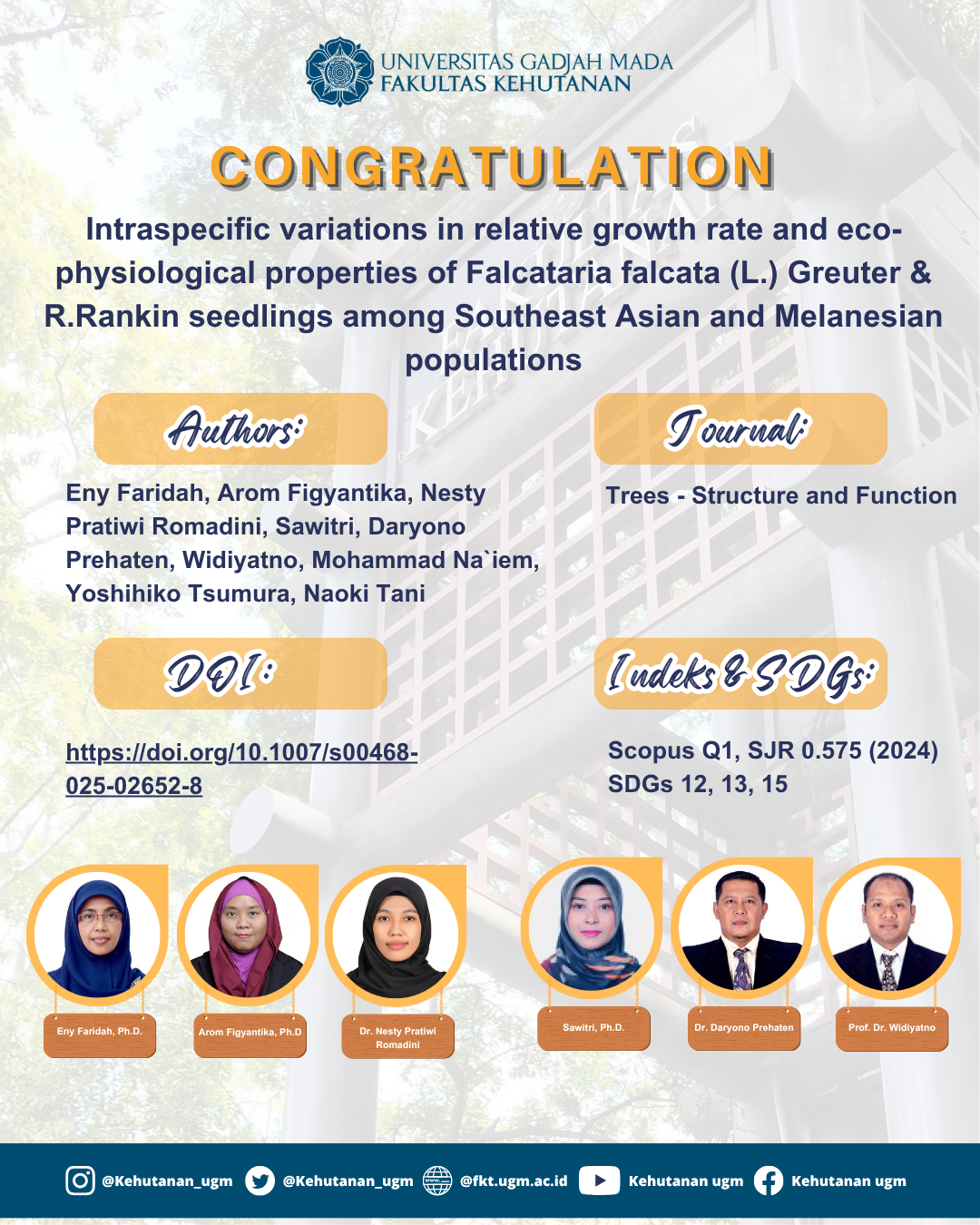
Abstract
The increased demand for lightweight wood products requires genetic improvements in the growth, wood properties, and stress tolerance of fast-growing timber species. Falcataria falcata (Leguminosae) is one of the fastest-growing trees worldwide and an important multipurpose plantation species. This species is distributed across various geological locations in Southeastern Asia and Melanesia; therefore, populations from different regions may show phenotypic variations. Herein, we investigated variations in relative growth rate (RGR) and 17 traits related to growth, photosynthesis, and stress tolerance using current-year seedlings from nine populations grown under common greenhouse conditions. We detected a threefold variation in RGR among populations, with those from North Maluku, Papua, and Solomon showing relatively higher RGR. In total, 10 out of 17 traits varied significantly, with pronounced variation in nitrogen (N)-use traits, such as root nodule fraction (16.8-fold) and leaf nitrogen content per unit area (2.7-fold). F. falcata exhibited remarkably high photosynthetic rate (Aarea), leaf nitrogen concentration (Nmass), and specific leaf area, reaching the maxima reported for woody broadleaf species. The RGR was positively associated with Aarea, Nmass, and leaf dark respiration rate among populations, but not with biomass allocation. These results suggest that Falcataria falcata contains wide phenotypic variations among geologically different populations and that leaf traits can be used as an index of seedling RGR. This information could aid in designing efficient breeding programs for this species.
SDGs:
SDG 12:Responsible Consumption and Production
SDG 13:Climate Action
SDG 15:Life on Land
Link Dokumen:
Download
